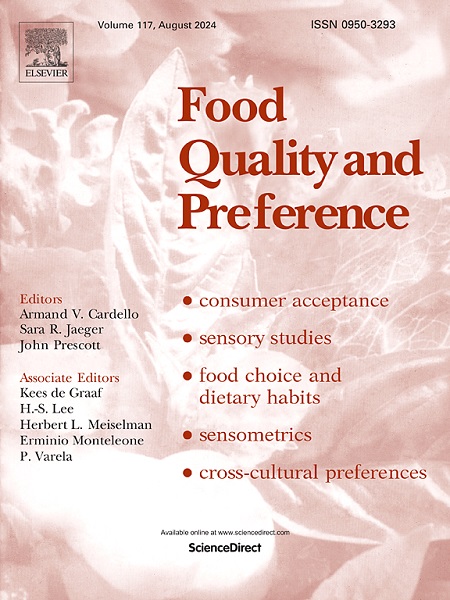基于民族中心主义的韩国消费者对来自不同产地的普通韩国食品的认知
IF 4.9
1区 农林科学
Q1 FOOD SCIENCE & TECHNOLOGY
引用次数: 0
摘要
本研究探讨韩国消费者对来自不同国家的食品的民族中心主义。调查的重点是5种食品(黄油、土豆、瓶装水、牛肉和泡菜)和13个原产国(澳大利亚、巴西、中国、哥伦比亚、印度、肯尼亚、韩国、新西兰、秘鲁、波兰、西班牙、泰国和美国)。以630名韩国消费者为对象,通过在线调查收集了购买意愿、支付意愿、民族优越感等方面的数据。采用民族中心主义量表进行因子分析,确定影响因素,并采用层次聚类分析和k均值聚类分析将消费者分为三类:高度民族中心主义、中度民族中心主义和低民族中心主义。结果表明,无论种族中心主义程度如何,在所有消费者群体中,韩国产食品在购买意愿和支付意愿方面的得分始终最高。具体来说,像泡菜这样的传统食品表现出明显的消费者偏好,而被视为全球化产品的黄油,在韩国和美国的购买意愿没有显着差异。此外,消费者对中国食品的认知度明显较低。未来的研究需要更好地了解这如何影响营销策略,因为食品市场在全球范围内不断发展。本文章由计算机程序翻译,如有差异,请以英文原文为准。
Korean consumers' perception of common Korean foods from different origins based on ethnocentrism
This study explores the ethnocentrism of Korean consumers regarding food products from different countries. It focused on five food items (butter, potatoes, bottled water, beef, and Kimchi) and 13 countries of origin (Australia, Brazil, China, Colombia, India, Kenya, Korea, New Zealand, Peru, Poland, Spain, Thailand, and United States). Data was collected through an online survey from 630 Korean consumers, measuring their willingness to purchase, willingness to pay, and ethnocentric attitudes. Factor analysis was conducted using the ethnocentrism scale to identify the influencing factors, and hierarchical and K-means cluster analyses were used to group consumers into three categories: High ethnocentrism, Moderate ethnocentrism, and Low ethnocentrism. The results indicated that, irrespective of ethnocentrism levels, food products of Korean origin consistently achieved the highest scores in willingness to purchase and willingness to pay across all consumer clusters. Specifically, traditional food items such as Kimchi exhibited pronounced consumer preferences, whereas butter, regarded as a globalized product, showed no significant difference in willingness to purchase between Korean and US origins. Additionally, consumer perceptions of food products originating from China were found to be significantly low. Future research is needed to better understand how this impacts marketing strategies as the food market continues to evolve globally.
求助全文
通过发布文献求助,成功后即可免费获取论文全文。
去求助
来源期刊

Food Quality and Preference
工程技术-食品科技
CiteScore
10.40
自引率
15.10%
发文量
263
审稿时长
38 days
期刊介绍:
Food Quality and Preference is a journal devoted to sensory, consumer and behavioural research in food and non-food products. It publishes original research, critical reviews, and short communications in sensory and consumer science, and sensometrics. In addition, the journal publishes special invited issues on important timely topics and from relevant conferences. These are aimed at bridging the gap between research and application, bringing together authors and readers in consumer and market research, sensory science, sensometrics and sensory evaluation, nutrition and food choice, as well as food research, product development and sensory quality assurance. Submissions to Food Quality and Preference are limited to papers that include some form of human measurement; papers that are limited to physical/chemical measures or the routine application of sensory, consumer or econometric analysis will not be considered unless they specifically make a novel scientific contribution in line with the journal''s coverage as outlined below.
 求助内容:
求助内容: 应助结果提醒方式:
应助结果提醒方式:


